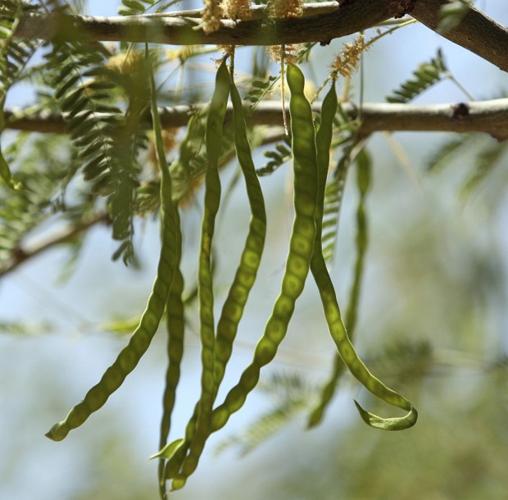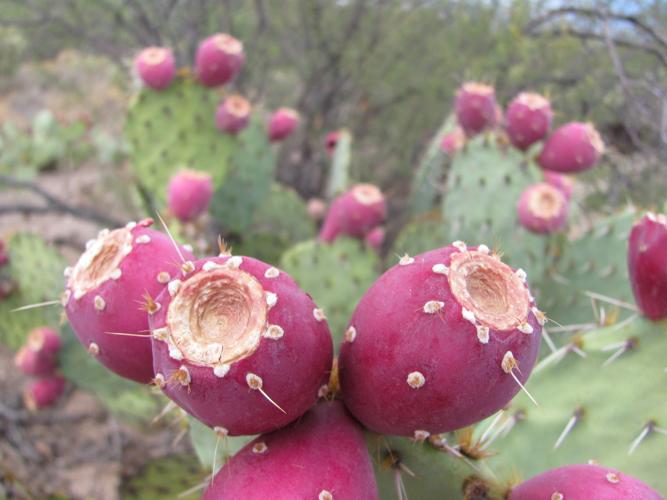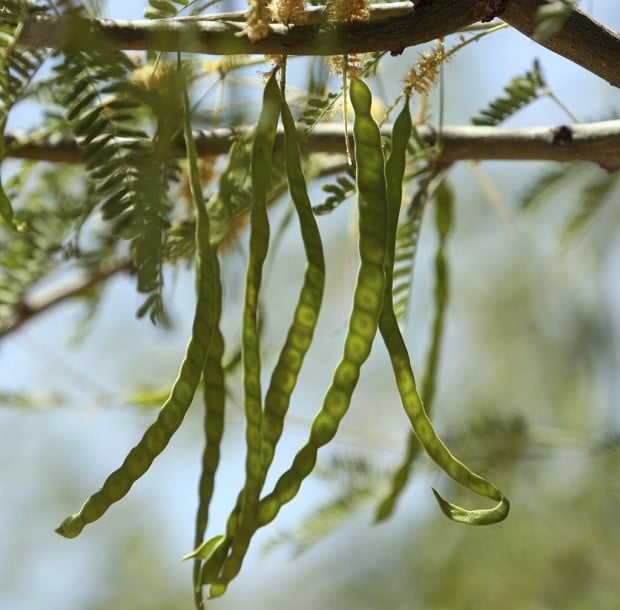
Fruits from the prickly-pear cacti, known as tunas, can be made into everything from jelly and syrup to sorbet.
The Sonoran desert has supported human settlements for at least 12,000 years. The incredible biodiversity of the area meant that there were plenty of foods available for Indigenous people to harvest. Today, many of these foods are still available to us — it just takes a little step out of our comfort zone.
The plants listed are a small sampling of the native foods we can grow in our area. All of these plants are extremely drought-tolerant, ideally adapted to our desert conditions, and will require little care once established. They are all perennials, which means you only need to plant them once. They’re a great option if you want to grow your own food but don’t want to fuss with vegetable beds and the high maintenance they entail — fertilizing, irrigation, transplanting, shade cloth and all that jazz.
Prickly pear (Opuntia spp.) Prickly pear cacti offer two options for tasty food: pads (nopales) and fruit (tunas). The young, green pads must be harvested while very tender, otherwise they will be tough. They can be grilled, sauteed, fried, pickled, and marinated. If you want to try them out, you can usually find them in grocery stores in the spring. They taste similar to green beans, but have a mucilaginous texture like okra. The fruits can be processed and made into syrups, juice, jellies and sauces.
Even if you plant a thornless variety, like Indian fig (O. ficus-indica), be aware that the pads and fruit still have glochids. You will need some type of tongs for picking the fruit or pads. For fruit and pads, you can get rid of the glochids by burning them off (by holding the fruit or pad with tongs over a gas flame) followed by processing and straining (fruit) or peeling (pads).
Banana yucca (Yucca baccata) Every part of this plant has a useful purpose, but for eating, the flowers and fruits are the main event. The fruits are picked off the plant when just slightly soft; they can be green to yellow in color. They can be baked or roasted like potatoes and have a flavor like a cross between a sweet potato and a banana. They tend to have a lot of seeds in the fruit, but the seeds can be roasted and dried and then ground into flour. Do not confuse this with yuca, also known as the cassava plant, native to South America.
Mesquite (Prosopsis spp.) Native mesquites in the Sonoran desert include velvet (P. velutina), screwbean (P. pubescens), and honey (P. glandulosa) mesquites. These marvelous trees belong to the legume family, and their bean pods provide nutritious food for humans and animals alike. You can harvest the pods fresh off the tree in the summer; taste the raw pods first to make sure you like the flavor. Desert Harvesters says that each tree can have a distinctive flavor. The dried pods can be ground into a gluten-free flour (no need to remove the beans, just grind up the whole thing) which is then used in baking and cooking. The flour is high in fiber and minerals.
Palo verde (Parkinsonia spp.) Two common native species are blue palo verde (P. florida) and foothills palo verde (P. microphylla). Like the mesquite, palo verde are legumes, and the beans are edible; unlike mesquite, you will want to remove the beans from the pods. You can harvest the pods when they’re green, and remove the beans from the inside to eat fresh or cooked. They can be frozen for later. You can also harvest them when the pods are dry, and eat the seeds toasted or grind them into flour. Another option is to sprout the seeds and eat the sprouts (raw or cooked). The flowers are also edible.
Wolfberry (Lycium spp.) Wolfberries are related to the famous goji berries, and have similar amounts of antioxidants and vitamins and the related potential health benefits. Favorite species for human consumption include L. fremontii and L. pallida. They aren’t great for fresh eating, due to their tartness, but make tasty jams, jellies, chutneys and syrups and are wonderful additions to various foods as dried berries.
Hackberry (Celtis spp.) The two species of hackberries native to our desert are canyon hackberry (C. reticulata), which is a tree, and desert hackberry, (C. pallida) which is a large shrub (and thus easier to harvest). This is your go-to plant if you want tasty fresh berries. You can freeze them if you have more than you can eat, or make them into jams. You will be sharing them with your native desert critters, too.
For more information, visit the Desert Harvesters website. For recipes and more native food plant ideas, as well as information on safe harvesting techniques, check out their excellent book "Eat Mesquite and More: A Cookbook for Sonoran Desert Foods and Living." You can also download the Linking Edible Arizona Forests (LEAF) Network’s edible tree guide. If you want to try out some of these foods before committing, take a look at the Sonoran Pantry selections on the Native Seeds SEARCH website.






